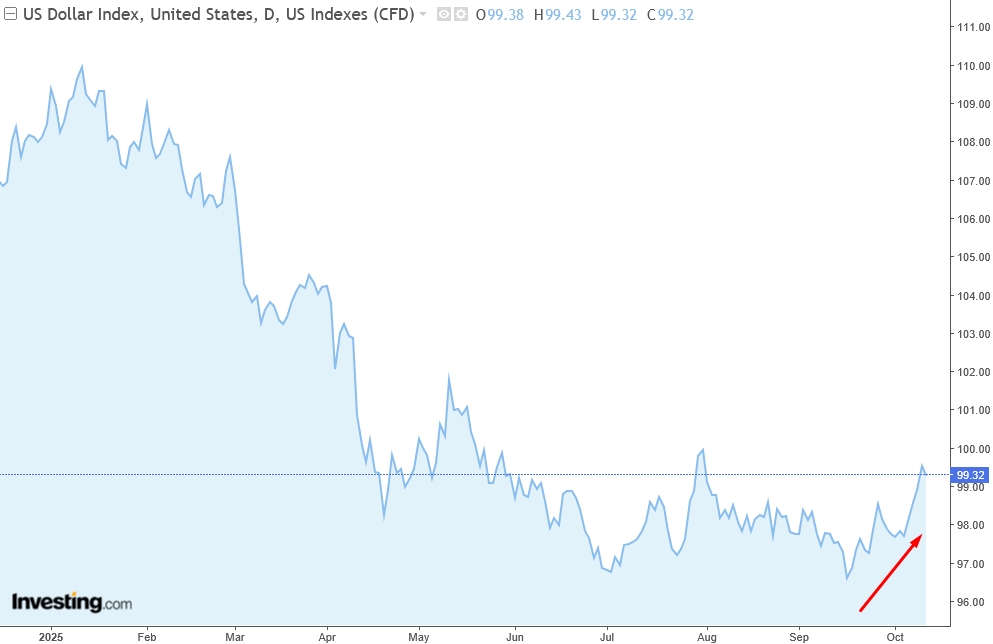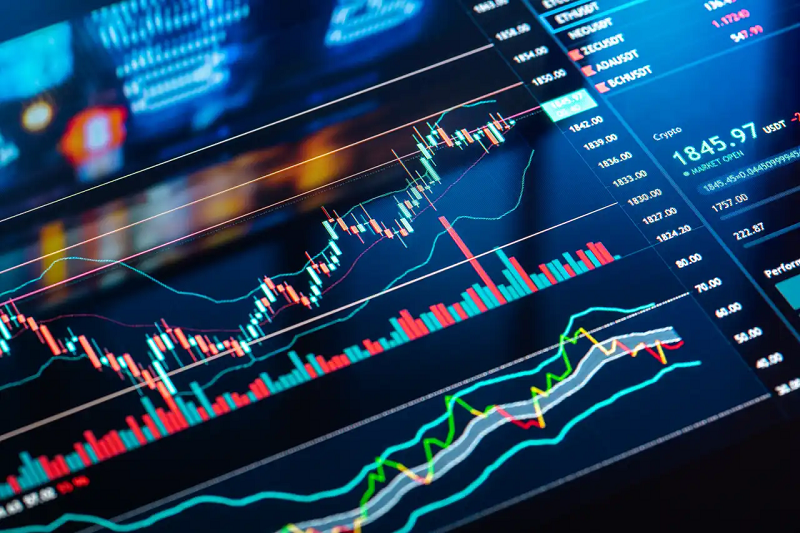Is the Dollar Bottoming Out? Overdone Rate Cut Bets Leave Dollar Bears Vulnerable

TradingKey - The “weak dollar” trade dominated foreign exchange markets in early 2025, with investors heavily betting on a declining U.S. dollar. But after the Federal Reserve delivered its first rate cut in September, that consensus has begun to crack. The Dollar Index (DXY), which fell over 10% in the first half of the year, has since rebounded 2% from mid-year.
As of October 10, the DXY stands at 99.32, up from around 96.5 — its 2025 low reached just before and after the Fed’s September rate decision. The index is up 1.57% in October alone.

2025 U.S. Dollar Index (DXY), Source: Investing.com
Why the Dollar Is Bouncing Back
The dollar’s strength stems from:
- Fed rate cuts being “priced in” — the initial easing move removed a key catalyst for further downside
- Growing caution among Fed officials about additional cuts, despite the September 25-bp reduction
While the Fed cited weakening labor market risks in initiating its first cut of 2025, several policymakers have continued to highlight upside inflation risks from tariffs, urging patience as the full impact unfolds.
Meanwhile, earlier concerns that fueled the weak-dollar narrative — including fears over Fed independence, slowing U.S. growth, and trade policy uncertainty — have eased:
- President Trump failed to remove Chair Jerome Powell or Governor Lisa Cook
- Key bilateral trade agreements have been secured
Although Deutsche Bank previously noted that global investors were hedging equity exposure via dollar shorts, there has been no broad-based “sell America” wave — unlike the panic seen earlier in the year.
Hedge Funds Flip: From Bearish to Bullish
Instead, global hedge funds have turned buyers of the dollar. On Wednesday, trading volume in euro-dollar put options (bearish EUR/USD) for December expiry was three times higher than call volumes (bullish EUR/USD).
Barclays said hedge funds are now engaging in tactical long-dollar positioning, seeking short-term gains amid shifting sentiment.
External Pressures Weigh on Rivals
Other major currencies are under pressure, amplifying the dollar’s relative strength:
- Euro: Dragged down by political instability in France
- Yen: Under pressure as Japan’s new leadership favors monetary easing
- New Zealand dollar: Weakened by more-than-expected rate cuts
Barclays noted that hedge funds are now net long the dollar against most G10 currencies, except the Australian dollar. Citi also observed a surge in demand for dollar-call options, though it cautioned that it may still be too early to declare a bottom.
Not a Full Reversal — But Pressure Mounts on Shorts
Societe Generale said there are still no signs of a full structural reversal in the dollar. Before this week’s shift, most market participants were preparing bearish options bets ahead of year-end.
Yet the recent rebound has clearly increased pain for dollar bears, including major banks like Goldman Sachs, JPMorgan, and Morgan Stanley.
If the dollar sustains its strength, it could trigger broader market repricing:
- Higher commodity import costs
- Downward pressure on emerging market equities and currencies
- Reassessment of global capital flows
One Investor Changes His Mind
Ed Al-Hussainy, currency strategist at Columbia Threadneedle, recently shifted from bearish to bullish on the dollar. Over the past six weeks, he reduced exposure to emerging markets, citing:
- Resilient U.S. economic fundamentals
- Overly optimistic market pricing of future Fed cuts
“The markets have priced in a very aggressive series of cuts, and it’s going to be difficult to execute them without a lot more labor-market pain,” he said.







